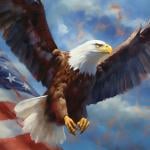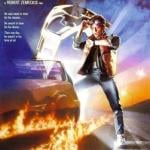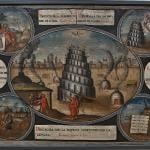PICTURES AND CONVERSATIONS: I bought more comic books. (First set of reviews here and here.) Here are some mostly-brief thoughts. We’ll go in order from least to most fun.
“X-Force: The Final Chapter.” Fine as far as it goes. Fun. Some people call this series cynical (since it’s about a team of superheroes created to win media attention and earn big bucks), but it consistently chooses drama and (more often) melodrama over cheap cynicism, which I think makes its satirical edge much sharper. The characters are like Agatha Christie’s: They’re silhouettes, not fully-fleshed-out people, but they’re recognizable enough types that you’re able to invest emotional energy in them. They flicker from stereotype to archetype, mostly stereotype, but that’s all they really need to do in order to keep you hooked into their dilemmas and dramas. So the series hovers somewhere above soap opera but well below art. Anyway, still not sure how much more of this I want, but I don’t regret going in for another round.
“New X-Men: E is for Extinction” and “Imperial”: The stories in these two books often veer a little too cosmic-scale for me–and I don’t know why, exactly, but I’m really very allergic to the Marvel Universe space stuff. I just don’t get or like their aliens. Part of it is that it’s extraordinarily hard to write an alien character that is both genuinely alien and engaging for the audience. So, I’m anti-alien, and there are muchos aliens in “Imperial.” Also, the drawing is still too bulgy, long-leggedy, and blunt. (And I could still use a lot less boob and butt, you know. The fans want pants, but not spray-on pants.)
Anyway, still fascinated by the characters, and interested in these two books as the preludes to “New Worlds” and “Riot at Xavier’s,” which I liked a lot more. There were very fun moments (between Jean and Hank, or Scott and Logan, etc.) in the caesuras between huge chunks of the world blowing up and similarly boring activity. (Did I mention I’m a chick?)
“Alias: Come Home” and “The Underneath”: These are great. The layouts aren’t as evocative and almost Lee Miller-ish as in the first volume, but the characters, storylines, and dialogue are all terrific. The top layer of conceit here is fun enough–write a noir comic with superheroics in the marginalia. But the underlying questions about whether Jessica Jones, PI and ex-superhero, is running away from responsibility or merely pretending to do so are richer than the genre interplay suggests. Also, I like her a lot, and I want her to go on more dates with the (ex-) Ant-Man.
“Marvels.” This–is–so–awesome. Quickly, for people who don’t know this already: “Marvels” is about the first years of superheroes. It’s about how ordinary, non-superheroic people would feel as we saw strange, immensely powerful, often inscrutable beings enter the scene. The story follows a news photographer from 1939 through the early ’60s, and shows New Yorkers alternately idolizing, fearing, and despising the superhumans.
The art is intensely realistic. (There’s a list of models at the back.) There are beautiful set pieces, like the flood of New York City or the scenes of the Human Torch aflame. But even the quietest moments are beautiful.
Many of the lines struck me as especially poignant in light of Americans’ position in the world today. The narration plays on some of the crusading, restless sense of American power that I talked about here, but it also gives you a real sense of what it feels like to be rescued–“liberated,” you might say–by forces obscure, unpredictable, violent, and utterly out of your control: “Before they came, we were so big, so grand. We were Americans… We were the ones who got things done. But we’d gotten smaller. …We weren’t the players anymore. We were spectators. …It was out of our hands. We were only the audience again–and we had no say in whatever was going to happen.”
And the general idea of the book–that what is marvelous is as threatening as it is awe-inspiring–is the basis of the concept of the sublime. So you know I liked it.
Sean Collins (who has an intriguing “intro-to-comics” list here) thinks “Marvels” isn’t for the general reader, since, in his view, its impact relies on intimate knowledge of Marvel’s coral-reef continuity. I can stand as a counterexample: I know virtually nothing about the fictional-history events referred to in the book. I have a very, very attenuated and scattershot sense of some threads of X-Men history, and I know that Peter Parker was bitten by a radioactive spider and lost his Uncle Ben, but beyond that I’m continuity-impaired. About the Fantastic Four I knew nothing before I opened “Marvels.” (There’re four of ’em, right? And they’re, like, fantastic?)
In my view, this lack of background knowledge actually enhanced the book, putting me in a situation much more like the situation of the protagonist, who has no clue what the heck is going on when this elf-eared aquatic dude suddenly starts rampaging through his hometown. I think if you want a terrific exploration of some classic themes (you know, power/responsibility, awe/terror/hate, celebrity/infamy, how it feels to think the world-historical situation has spiraled completely out of your control when you were supposed to be at the top of the food chain) you will not need to know anything about Captain America’s origin to get a real kick out of “Marvels.” (One exception: I would have liked to know which of the Marvel heroes are mutants and how the others got to be superheroes. Is it just the X-Men who are mutants? But that didn’t really detract from my reading pleasure, as this rave review should demonstrate.)
Apparently there will be a sequel, taking us through the 1970s. Even though the artist will not be returning, I’m thrilled–after I finished “Marvels” I hopped onto Amazon.com and sought any possible sequels, but came up empty. So I can’t wait for more “Marvels.”











